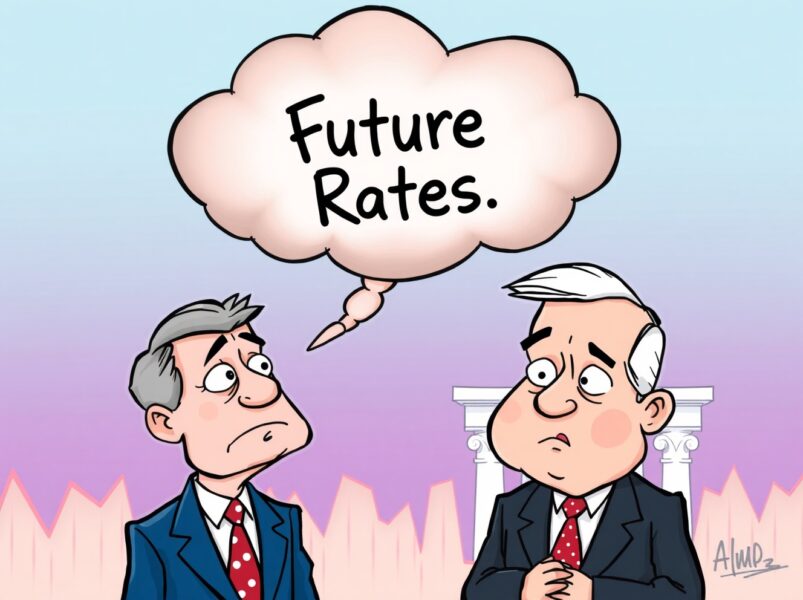Shocking Lack of Fed Rate Guidance: Treasury Secretary Bessent Expresses Dismay
0
0

BitcoinWorld

Shocking Lack of Fed Rate Guidance: Treasury Secretary Bessent Expresses Dismay
The financial world is abuzz following recent comments from U.S. Treasury Secretary Scott Bessent, who openly expressed his astonishment regarding Federal Reserve Chair Jerome Powell’s lack of clear Fed rate guidance. This unexpected declaration has sparked considerable discussion, particularly given the current economic climate.
Why is Clear Fed Rate Guidance So Crucial for the Economy?
Secretary Bessent’s surprise stems from the Federal Reserve’s decision not to offer explicit signals about the future trajectory of interest rates. For many, this ambiguity creates an environment of uncertainty that can ripple through various sectors of the economy.
- What does Bessent believe?
- He finds it perplexing that Powell has ‘taken a step back’ from providing clearer communication.
- Bessent’s firm conviction is that the U.S. economy is now entering an ‘easing cycle.’
- He also suggests that the Fed has maintained interest rates at ‘excessively high’ levels for an extended period.
This perspective highlights a fundamental debate within economic policy circles: when is the right time to adjust monetary policy, and how transparent should those intentions be?
The Impact of Ambiguous Fed Rate Guidance on Markets and Beyond
When central banks like the Federal Reserve withhold explicit Fed rate guidance, it can have significant consequences. Investors, businesses, and consumers rely on these signals to make informed decisions about spending, borrowing, and investment.
- Potential Challenges:
- Market Volatility: Lack of clear direction can lead to increased speculation and price swings in financial markets.
- Business Planning: Companies may delay investment decisions due to uncertainty about future borrowing costs.
- Consumer Confidence: Households might become more cautious with spending if they are unsure about the economic outlook or mortgage rates.
Conversely, transparent guidance helps stabilize expectations and allows economic actors to plan more effectively. This is particularly important as the U.S. economy navigates potential shifts.
Is the US Truly Entering an Easing Cycle? Examining the Debate on Fed Interest Rates
Secretary Bessent’s assertion that the U.S. is entering an easing cycle directly challenges the Fed’s current stance, or at least its communication strategy. An easing cycle typically means the central bank is preparing to lower interest rates to stimulate economic growth.
- Arguments for Lowering Rates:
- Concerns about potential economic slowdowns or recessions.
- The desire to reduce borrowing costs for businesses and consumers, encouraging investment and spending.
- Belief that inflation is sufficiently under control, allowing for a more accommodative monetary policy.
However, the Federal Reserve must balance these considerations with the ongoing fight against inflation and the need to maintain price stability. The debate around Fed interest rates is complex, involving numerous economic indicators and future projections.
The recent comments from Treasury Secretary Scott Bessent underscore a growing impatience for clearer Fed rate guidance. His surprise at Chairman Powell’s reticence, coupled with his strong belief in an impending easing cycle and excessively high interest rates, points to a significant divergence in expectations. As the U.S. economy continues to evolve, the clarity—or lack thereof—from the Federal Reserve will remain a critical factor shaping market sentiment and economic decisions.
Frequently Asked Questions (FAQs)
Q1: What does ‘easing cycle’ mean in economics?
An easing cycle refers to a period when a central bank, like the Federal Reserve, begins to lower interest rates to stimulate economic growth, encourage borrowing, and boost spending.
Q2: Why is clear Fed rate guidance important?
Clear guidance helps financial markets, businesses, and consumers make informed decisions about investments, borrowing, and spending by providing predictability about future economic conditions and the cost of money.
Q3: Who is Scott Bessent and what is his role?
Scott Bessent is the U.S. Treasury Secretary. His role involves advising the President on economic and financial issues, managing federal finances, and overseeing the Treasury Department.
Q4: Why might the Federal Reserve be reluctant to offer clear guidance?
The Fed might be reluctant to offer clear guidance to maintain flexibility in responding to rapidly changing economic data, avoid pre-committing to a path that might become inappropriate, or manage market expectations more cautiously.
Did Secretary Bessent’s remarks on Fed rate guidance resonate with you? Share your thoughts and join the conversation! Follow us on social media and spread the word about this critical economic discussion.
To learn more about how macroeconomic policy impacts the crypto market, explore our article on key developments shaping Bitcoin price action.
This post Shocking Lack of Fed Rate Guidance: Treasury Secretary Bessent Expresses Dismay first appeared on BitcoinWorld.
0
0
 Manage all your crypto, NFT and DeFi from one place
Manage all your crypto, NFT and DeFi from one placeSecurely connect the portfolio you’re using to start.




